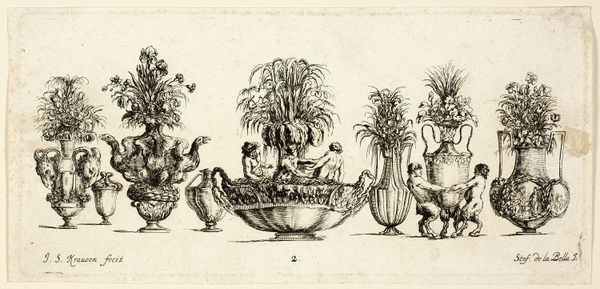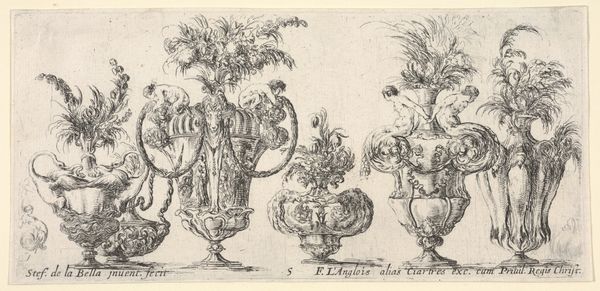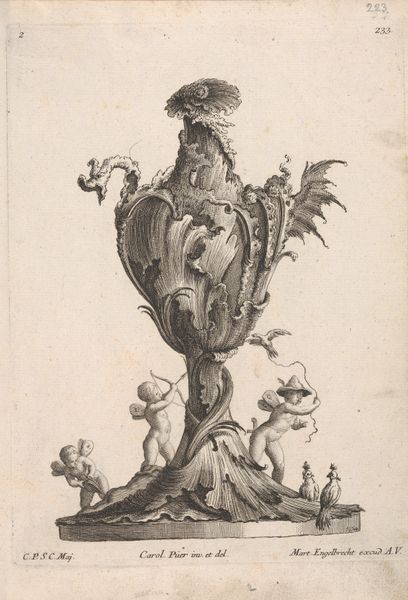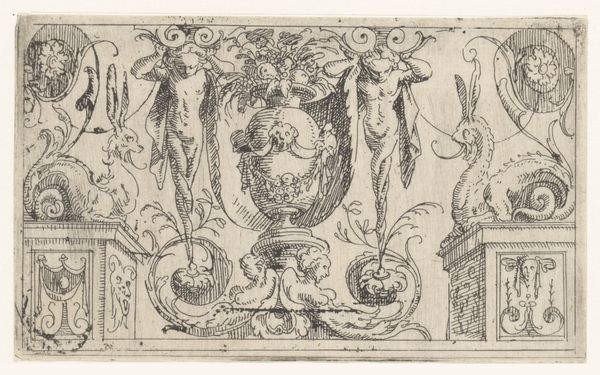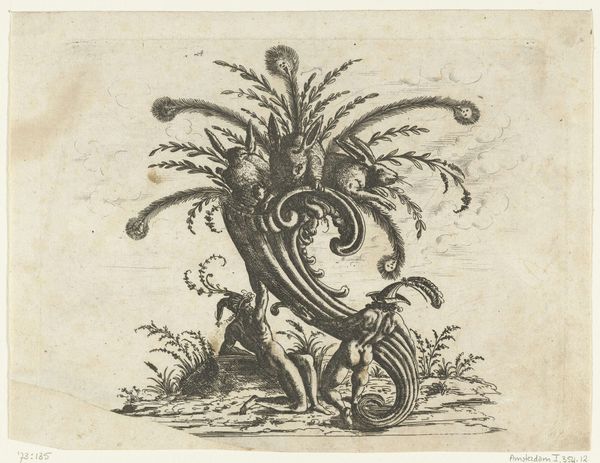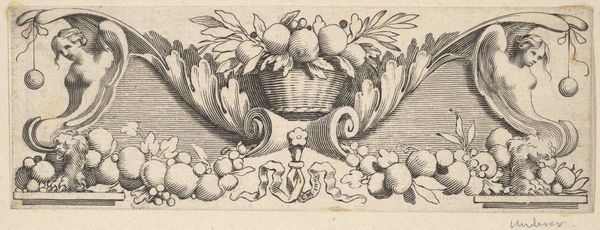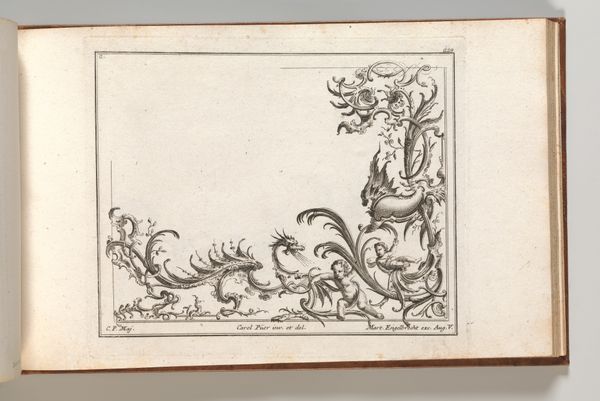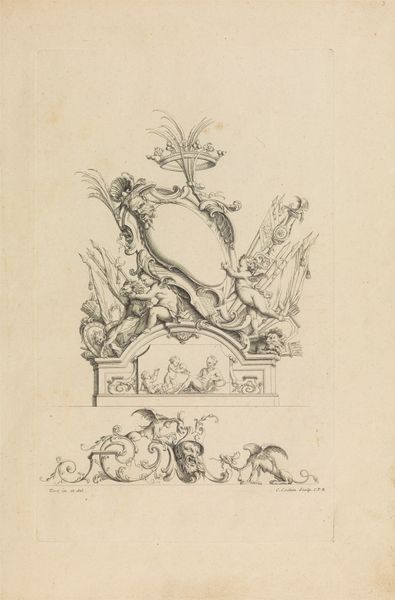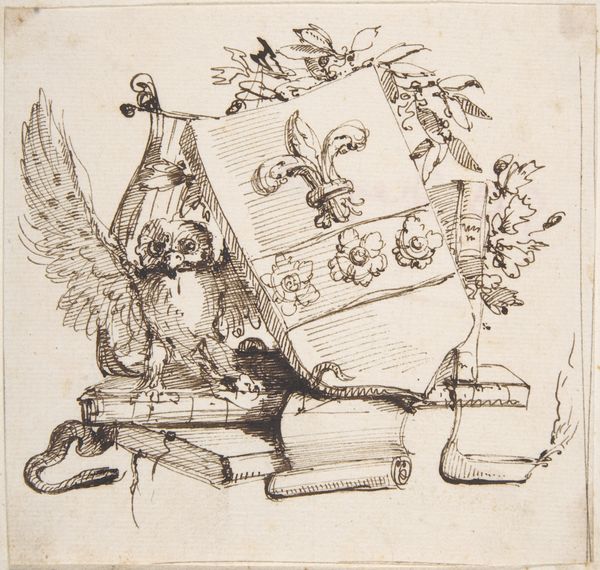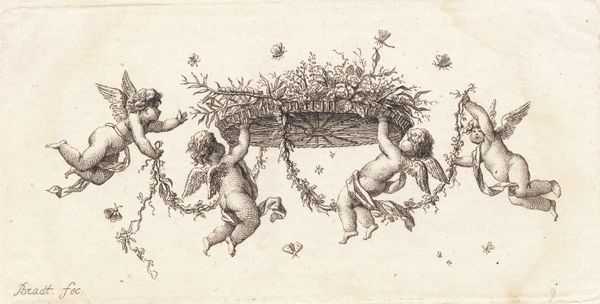
Plate Four from Raccolta di Vasi diversi di Stef. de la Bella Fiorentino 1646
0:00
0:00
drawing, print, etching, paper
#
drawing
#
baroque
#
pen drawing
# print
#
etching
#
paper
#
line
#
decorative-art
Dimensions: 103 × 215 mm (sheet)
Copyright: Public Domain
Curator: Welcome! Today, we're looking at "Plate Four from Raccolta di Vasi diversi di Stef. de la Bella Fiorentino," dating back to 1646. It's an etching by Johanna Sibylla Küsel, housed here at the Art Institute of Chicago. The composition consists of several vase designs displayed across the page. Editor: My first impression? It's wonderfully ornate. The variations in line and form draw me in, they seem to almost breathe, particularly that elaborate central vase. Curator: I agree, and it is critical to acknowledge that these ornamental vases also functioned within a specific economic and social structure. Consider the clientele who acquired such elaborate pieces; it was a marker of status, reflecting trade routes, resource extraction, and the labor involved in production. These weren't simply aesthetic objects; they represented the apex of 17th-century consumer culture. Editor: I'm interested in the formal relationships Küsel establishes. The strong symmetry of the central piece acts as an anchor, yet the flanking designs offer compelling counter-rhythms and contrasts. Curator: Küsel was working during the Baroque period; the style here speaks of drama, movement, and emotional engagement. Each vase is filled with flowers that, depending on the bloom, likely carried particular symbolic meaning within that context. Editor: The meticulous rendering in monochrome—the stark interplay of light and shadow—emphasizes volume and texture. Look at the intricate details on the vessel with cherubic figures. I wonder how the prints may have informed practices, like flower arranging, as decorative-arts were often didactic. Curator: Precisely. Furthermore, these prints could be circulated amongst artisans as model books that provided templates to follow; so to is this form of art actively shaping visual culture in a much more integrated sense. Editor: Indeed, it blurs that rigid division between art and design, between the “high” and the “low”. This seemingly simple decorative plate encapsulates so much richness. Curator: It’s been enlightening examining these vessels together, revealing their layers of artifice, labor, and visual dynamism, and their continued resonance through art history. Editor: Yes, Johanna Sibylla Küsel’s print truly embodies the capacity of art to hold within its form both complexity and delight.
Comments
No comments
Be the first to comment and join the conversation on the ultimate creative platform.
